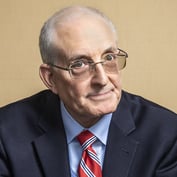A first-of-its-kind ranking of 401(k) plans at the 250 biggest companies in the U.S. found that ConocoPhillips and Abbott Laboratories are among those that provide the most lucrative retirement benefits. Among the least generous are Facebook Inc., Amazon.com Inc. and Whole Foods Market Inc. The natural-foods grocer offers a maximum contribution of $152 annually.
ConocoPhillips, a Houston oil and natural gas producer, topped the Bloomberg News rankings of the largest public companies’ 401(k) plans, largely due to a matching formula that contributes 9% of annual salaries for employees who save as little as 1% of their pay.
Facebook finished last in the Bloomberg rankings, which were based on 2012 data, the latest available for all companies. The Menlo Park, California-based social media company didn’t offer any match at the time. It started making contributions in April to its 401(k) plan.
The rankings allow employees, for the first time, to see how their own 401(k) compares to others on such criteria as company match, investment options, and time to vest. For example, more than 40% of companies allow workers to vest immediately, enabling them to take company contributions with them if they leave. Retailers Home Depot Inc. and Amazon.com make employees wait three years, and software maker Oracle Corp., four.
One finding rings out clearly: when generously conceived, a 401(k) plan can put workers on the track for a comfortable and secure retirement. After 13 years working in three states for ConocoPhillips, 35-year-old Daniel Baker is feeling confident about his eventual retirement even though he’s at an age when many workers have just begun to focus on their 401(k) plans.
Mental Peace
“My wife and I have peace of mind,” said Baker, who works in the company’s treasury department. “We’re well on our way.”
ConocoPhillips was among about 90 companies that gave additional retirement funds to employees, regardless of whether or how much the workers themselves contributed. Tobacco company Philip Morris International Inc., runner-up in the rankings, paid not only a 5% match but also an extra 15% of employees’ compensation.
“A robust retirement package for our U.S. personnel is essential to ensuring that we can attract, motivate and retain the best global talent,” said Corey Henry, a spokesman for New York-based Philip Morris.
Primary Vehicle
Created by federal legislation in 1978 as a supplement to traditional pensions, 401(k)s instead have supplanted them as corporate America’s primary retirement vehicle. Participants increased to 61 million in 2011 from 7.5 million in 1984, according to Labor Department data. Americans held $4.3 trillion in 401(k) plans as of March 31, according to the Investment Company Institute, a trade association for the fund industry.
Even as 401(k)s mushroomed, companies carefully guarded the details of their plans, making any comparisons difficult.
In 2010, the Department of Labor began posting information online that the government had required companies to provide about their 401(k) plans. Yet the details were so difficult to access and understand that few employees could ever hope to decipher them. Drawing on Labor Department data, BrightScope Inc., a financial information company, began rating plans according to how soon each one would enable the typical worker to retire.
“Some companies have the philosophy that it’s their job to take care of employees, and others are sheer profit machines who will do only what they have to to be competitive,” said Mike Alfred, chief executive officer of San Diego-based BrightScope.
Difficult Comparisons
BrightScope’s website doesn’t measure one company against another. Also, its ratings are based in part on workers’ behavior: whether they participate in the plan, and how much they save.
To bring clarity to the 401(k) universe, Bloomberg News reporters spent six months tracking down and studying company filings. Bloomberg’s analysis focuses on what companies offer new hires.
Efforts to make plans more transparent and understandable to employees are vital, Massachusetts Secretary of the Commonwealth William F. Galvin said in an interview.
“It’s very hard to do a comparison of your plan versus other plans, and employees are also in the dark about how much they’re getting and any changes to the plan,” said Galvin, who has urged Congress to force companies to disclose shifts in the timing of their 401(k) contributions. “No one ever envisioned, when 401(k)s started, that people would become so dependent on them for retirement, and regulation hasn’t kept pace.”
Long Tradition
Energy and biotechnology companies generally scored high in the Bloomberg rankings. Many used to offer pensions to all employees, and have continued the tradition of funding the bulk of savings needed for a secure retirement.
ConocoPhillips estimates that an employee could retire at 60 after 35 years of service with savings of $3.8 million, adjusted for inflation, assuming a starting salary of $75,000 and increases of 4% a year.
“Our goal is to help employees replace at least 80% of their incomes in retirement by providing two-thirds of what they need while they save one-third,” said Lynn Tramel, a benefits manager at ConocoPhillips. “It’s a partnership.”
Biotechnology and science companies rely on highly educated employees, many of whom have Ph.D.’s or M.D.’s., and substantial retirement plans serve as powerful recruitment and retention tools. At Abbott Laboratories, which made Bloomberg’s top 10, employees who save just 2% of their annual salaries get a 5% match from the company.
Giving Incentives








 July 25, 2014 at 10:26 AM
July 25, 2014 at 10:26 AM










